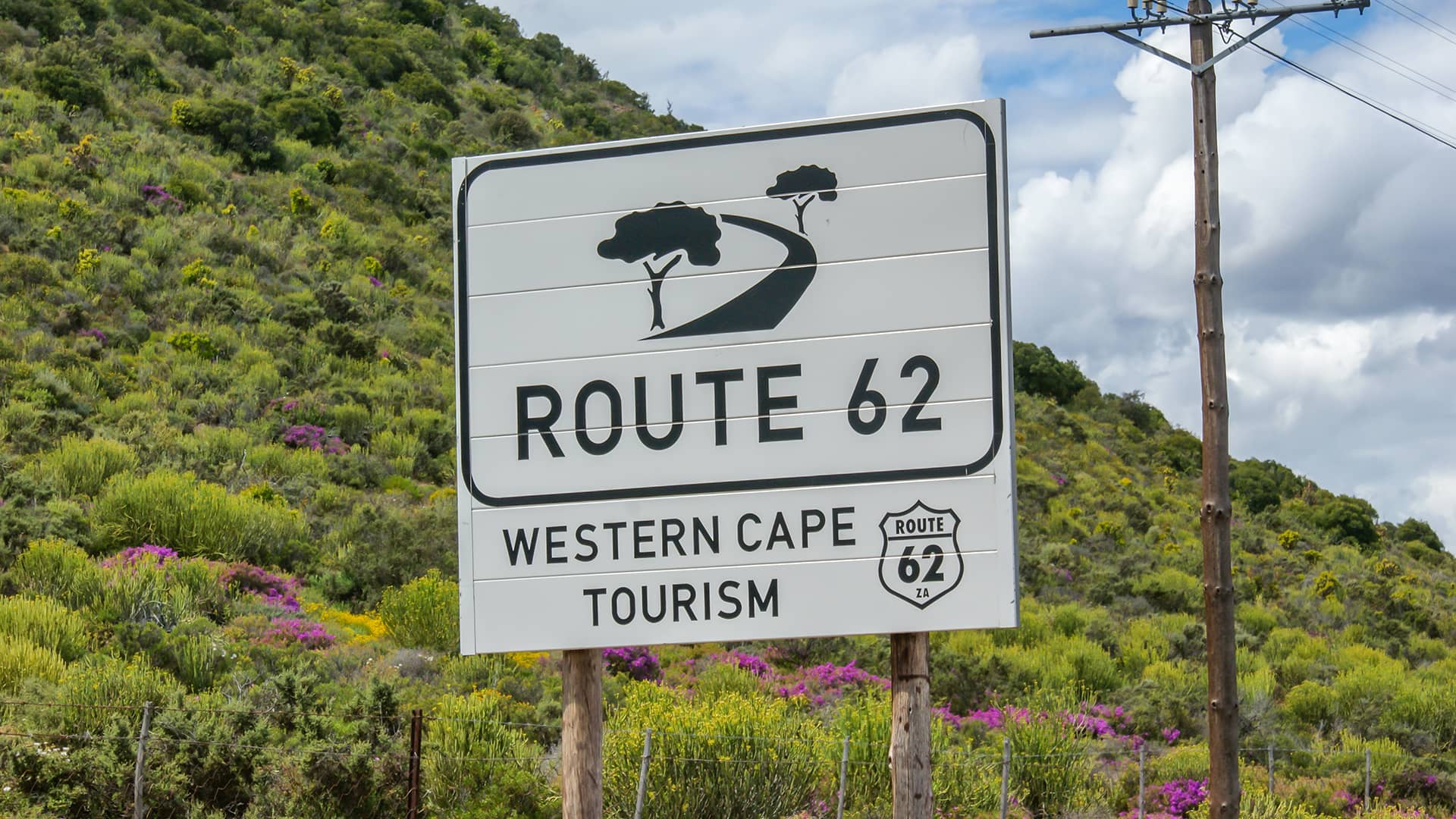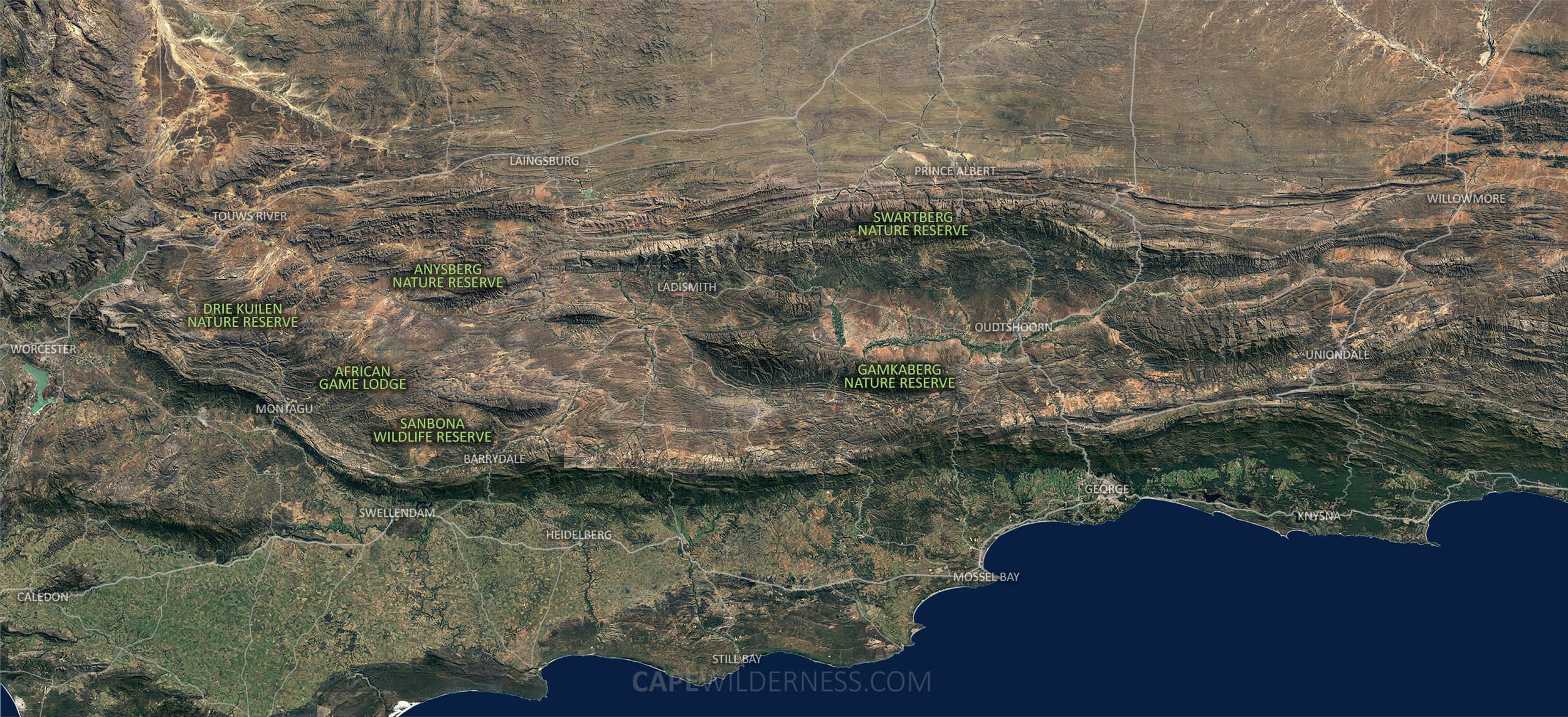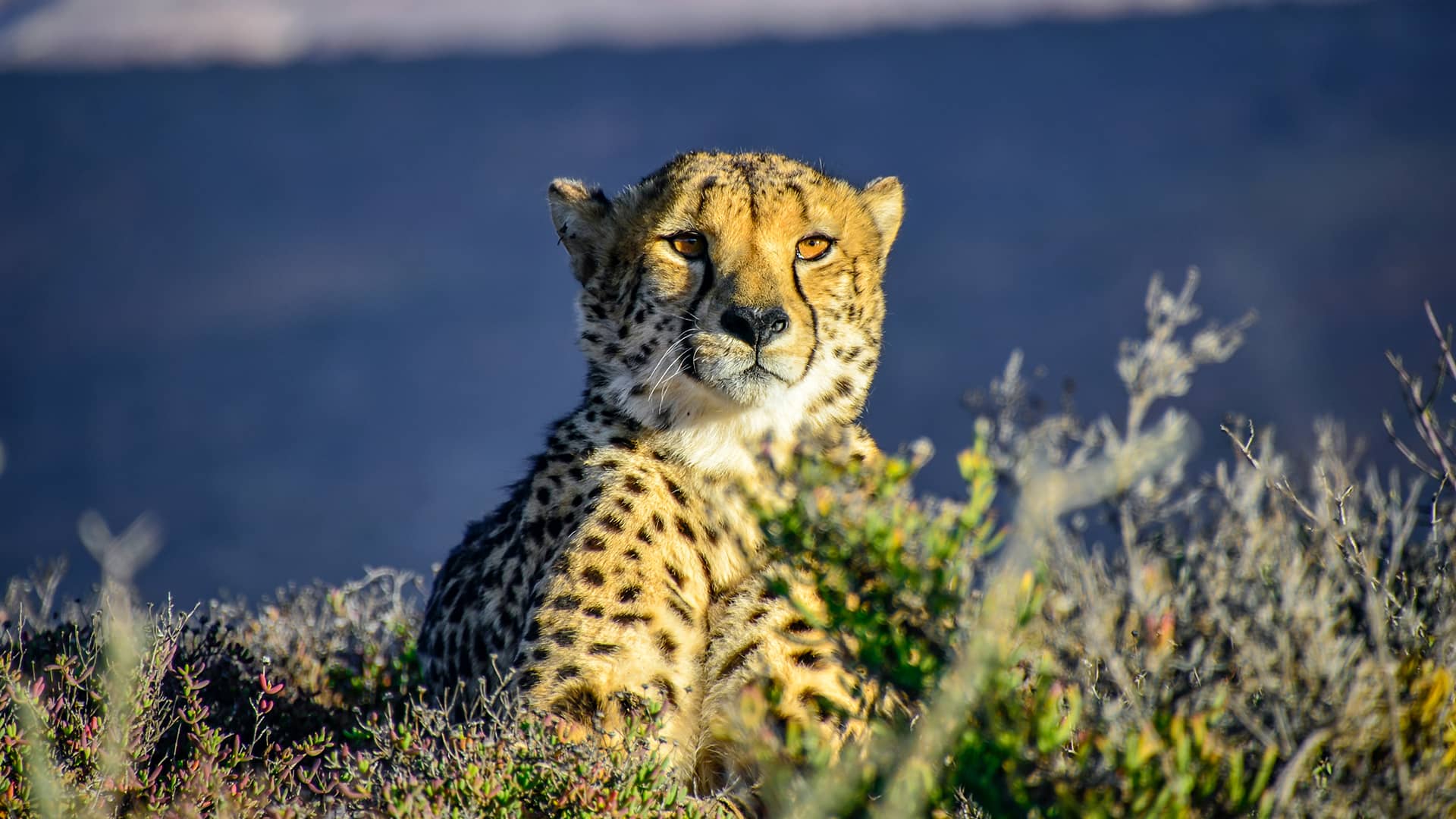Find your calm among the succulents and under the vast, open skies of the Little Karoo
Little Karoo
The Little Karoo is nestled between a couple of mountain ranges. The Outeniqua and Langeberg mountains in the south and the Swartberg mountains in the north. In between, you will find a semi-arid region with big skies, wide open roads, unique flora and the Ostrich capitol of the world: Oudtshoorn.


For a long time, these mountain ranges have made it quite difficult to reach the Little Karoo. But nowadays there are many mountain passes to choose from, some of which are very narrow and dramatic looking. Many of these passes on the Outeniqua and Langeberg mountains are paved and pose no problem for any type of vehicle. Another scenic drive here is Route 62. It runs between Oudtshoorn and Montagu and is often a great alternative to the busy N2 coastal highway.
Big game animals such as antelope, elephant, kudu and large herds of African Buffalo used to dominate these plains, until they were hunted and driven out by modern development. That is a different story today, but you might be surprised by the species of mammals you can find. Some of the game reserves here have the Big 5 present and other reserves host species like Klipspringer, Greater Kudu, Springbok, Cape Porcupine, Gemsbok, Giraffe, Aardvark, Mountain Zebra and Nyala.
The Little Karoo has a hidden attraction that not all tourists are aware of. This region is the land of succulents. The Succulent Karoo Biome can be found in many areas in this region. This biome is home to the richest diversity of succulent plant species on earth. These plants are adapted to conserve as much water as possible. Together with the Fynbos and Nama-Karoo Biome, this region truly is a floral hotspot.


WHERE
IS THIS REGION
LOCATED
PARKS & RESERVES

African Game Lodge
The African Game Lodge is located to the east of Montagu and offers a beautiful Karoo landscape. A semi-arid valley in the Langeberg Mountains with Fynbos vegetation. This reserve is dedicated to wildlife, rehabilitation and preserving biodiversity. Due to the low-rainfall, sustaining large herds of grazers is impossible, but you will find antelope like Common Eland, Gemsbok, Greater Kudu, Springbok and Wildebeest. Due to the absent of large predators, you can enjoy many kilometers of hiking trails.

Drie Kuilen Nature Reserve
The Drie Kuilen Nature Reserve is located to the north of Montagu. It is a 4300ha reserve nestled in a mountainous terrain with beautiful rock formations, a wide variety of protected game and rich in Fynbos and Renosterveld vegetation. There are several hiking trails through the reserve, some with natural rock pools and streams to enjoy. Take one of the game drives, go mountain biking or just enjoy a scenic walk.

Sanbona Wildlife Reserve
This 62.000ha reserve is located to the west of Barrydale. It has mountains, undulating plains, indigenous fauna and flora and beautiful rock formations. This is also the home of the Big 5 and especially white Lions. Sanbona offers game drives, self-drives and guided walks. The combination of the Big 5 and other wildlife, seen in a Fynbos and Succulent Karoo covered landscape, ensures a very unique experience.

Anysberg Nature Reserve
The Anysberg Nature Reserve is located between the towns of Ladismith, Laingsburg, Touwsrivier and Montagu. The reserve is almost 80.000ha in size and consists of plains, deep valleys, steep gorges and beautiful mountainous backdrops. A 4x4 trail and many kilometers of mountain biking and hiking trails are excellent to discover the rich biodiversity of this reserve. Numerous antelope and smaller carnivore species roam here.

Gamkaberg Nature Reserve
The Gamkaberg Nature Reserve is located to the west of Oudtshoorn and encompasses almost the entire Gamkaberg mountains. This varied terrain includes mountain peaks, plateaus, deep ravines and incredible rock formations. Large numbers of Mountain Zebra roam here, alongside other antelope and smaller predators. Many hiking trails venture through this landscape that is covered with Fynbos and Succulent Karoo.

Swartberg Nature Reserve
The Swartberg Nature Reserve is located between Oudtshoorn and Prince Albert and is a long, narrow stretch of land. The 121.000ha reserve is home to the Gamkaskloof, also known as Die Hel. There are two spectacular mountain passes that cut right through the reserve: the Swartberg Pass (R328) and the Meiringspoort Pass (N12). The vegetation here is mostly Renosterveld, Mountain Fynbos and Spekboom Veld. A couple of day hikes and multi-day hikes take hikers past beautiful rock formations, incredible views and unspoiled vegetation.


FLORA & FAUNA
The floral diversity of the Little Karoo is some of the highest in the world. A number of factors are responsible for this diversity. The region consists of mountains, valleys, rolling hills, rocky areas, plains and a maze of small drainage systems. Together with the convergence of a hot and dry climate in the north and a cool and moist climate in the south, plant life is able to thrive here. Over 3200 plant species occur here, of which 400 are endemic.


The most dominant plant species here are succulents, desert-adapted grasses, perennial & annual wildflowers, acacia trees and drought-resistant shrubs. The months of July, August and September are the best to visit here and see an abundance of colorful succulents. Noteworthy plant families are the Stonecrop and Stone Plant families. In these two families you will find many succulent plants that are so characteristic to arid environments.
There are quite a lot of different mammal species in the Little Karoo. Some of the game reserves have the Big 5 present and other reserves host species like Klipspringer, Greater Kudu, Springbok, Cape Porcupine, Gemsbok, Giraffe, Aardvark, Mountain Zebra and Nyala. Some reserves also inhabit the critically endangered Riverine Rabbit.
Over 200 bird species have been observed here, with some notable birds being the Martial Eagle, Verreaux’s Eagle, Cape Rockjumper, Southern Black Korhaan, Blue Crane, Crowned Lapwing, Kori Bustard and Blacksmith Lapwing. But this region is most famous for the Common Ostrich. Although they can be found throughout South Africa, the most handsome specimens have always come from the Little Karoo. You can find many Ostrich farms here, especially around Oudtshoorn.
The, mostly, dry and arid landscape of the Little Karoo is ideal for reptiles. With 5 species of tortoise and many snakes and lizards, this class is well represented.

